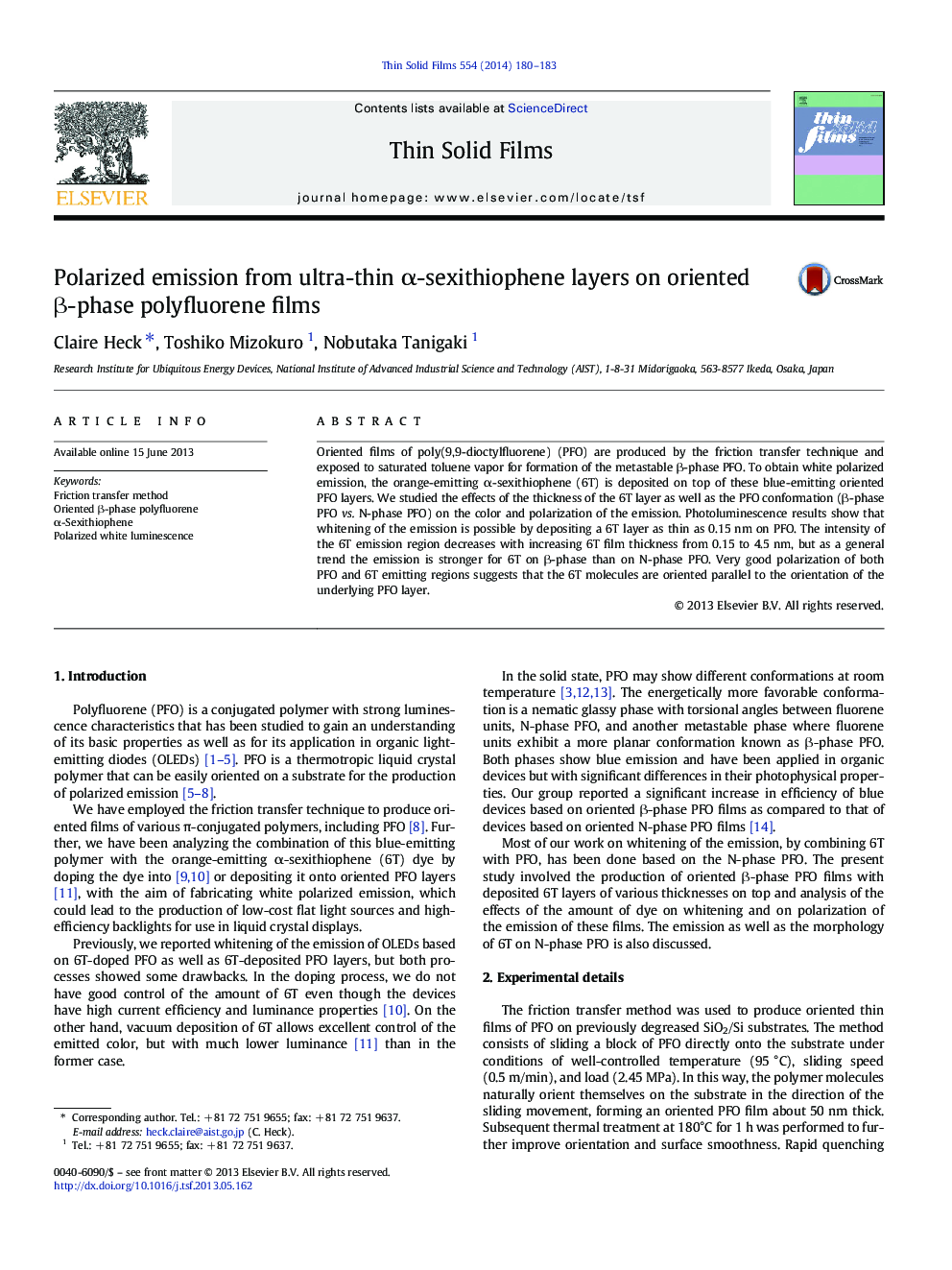| Article ID | Journal | Published Year | Pages | File Type |
|---|---|---|---|---|
| 1665658 | Thin Solid Films | 2014 | 4 Pages |
•Friction transfer method is used to produce oriented polyfluorene films.•Oriented polyfluorene films are used to produce polarized emission.•Blue polyfluorene is combined with orange α-sexithiophene for white emission.•α-Sexithiophene is deposited on oriented polyfluorene for polarized white emission.•Emission with higher efficiency is achieved when β-phase polyfluorene is employed.
Oriented films of poly(9,9-dioctylfluorene) (PFO) are produced by the friction transfer technique and exposed to saturated toluene vapor for formation of the metastable β-phase PFO. To obtain white polarized emission, the orange-emitting α-sexithiophene (6T) is deposited on top of these blue-emitting oriented PFO layers. We studied the effects of the thickness of the 6T layer as well as the PFO conformation (β-phase PFO vs. N-phase PFO) on the color and polarization of the emission. Photoluminescence results show that whitening of the emission is possible by depositing a 6T layer as thin as 0.15 nm on PFO. The intensity of the 6T emission region decreases with increasing 6T film thickness from 0.15 to 4.5 nm, but as a general trend the emission is stronger for 6T on β-phase than on N-phase PFO. Very good polarization of both PFO and 6T emitting regions suggests that the 6T molecules are oriented parallel to the orientation of the underlying PFO layer.
